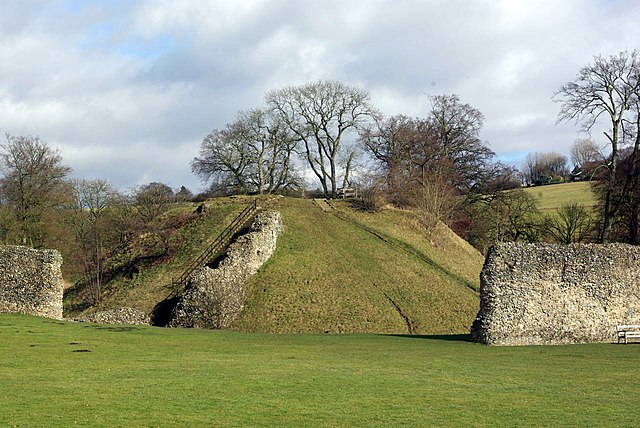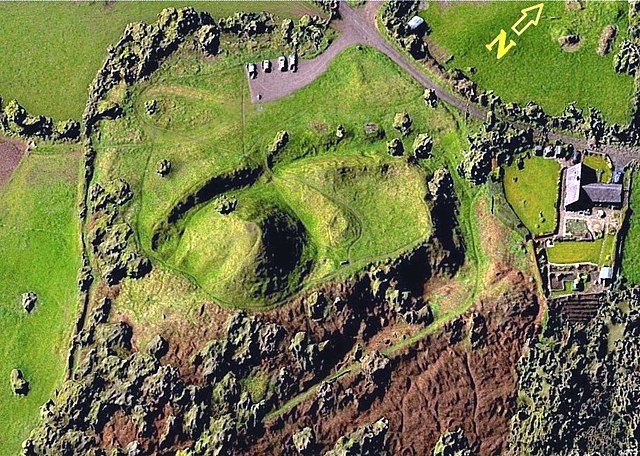Berkhamsted Castle is a Norman motte-and-bailey castle in Berkhamsted, Hertfordshire. The castle was built to obtain control of a key route between London and the Midlands during the Norman conquest of England in the 11th century. Robert of Mortain, William the Conqueror's half brother, was probably responsible for managing its construction, after which he became the castle's owner. The castle was surrounded by protective earthworks and a deer park for hunting. The castle became a new administrative centre of the former Anglo-Saxon settlement of Berkhamsted. Subsequent kings granted the castle to their chancellors. The castle was substantially expanded in the mid-12th century, probably by Thomas Becket.
Exterior walls, seen across the moat
Castle motte
View from the motte, looking into the inner bailey
Ruins of the external walls, keeper's house, castle motte in background
A motte-and-bailey castle is a European fortification with a wooden or stone keep situated on a raised area of ground called a motte, accompanied by a walled courtyard, or bailey, surrounded by a protective ditch and palisade. Relatively easy to build with unskilled labour, but still militarily formidable, these castles were built across northern Europe from the 10th century onwards, spreading from Normandy and Anjou in France, into the Holy Roman Empire, as well as the Low Countries it controlled, in the 11th century, when these castles were popularized in the area that became the Netherlands. The Normans introduced the design into England and Wales. Motte-and-bailey castles were adopted in Scotland, Ireland, and Denmark in the 12th and 13th centuries. By the end of the 13th century, the design was largely superseded by alternative forms of fortification, but the earthworks remain a prominent feature in many countries.

A reconstruction of the English city of York in the 15th century, showing the motte-and-bailey fortifications of Old Baile (left foreground) and York Castle topped by Clifford's Tower (centre right)
Plan of Topcliffe Castle in North Yorkshire, an archetypal motte-and-bailey design
Castle Pulverbatch in Shropshire in England was built in the 11th or 12th century and abandoned by 1202. This digital elevation model shows the motte just left of centre, with the bailey to the right (north-east) of it.
The motte and bailey defences of Launceston Castle in England








